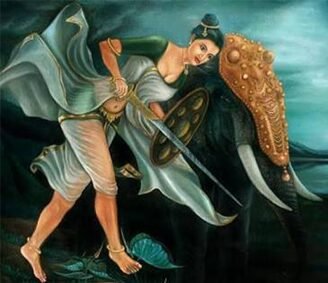Santal Music and Dance: Expressions of Identity and Resistance

Santal, a group of indigenous people who live in parts of India, especially in places like Jharkhand and West Bengal. However, along with these two states, they are also found in other states like Odisha, Bihar, Assam and Tripura. This community is so vastly spread out that, they are found in Bangladesh and Nepal too. Talking about their culture, their preservation of language, rich mythology, unique musical traditions, and notably, their rejection of the caste system set them apart.
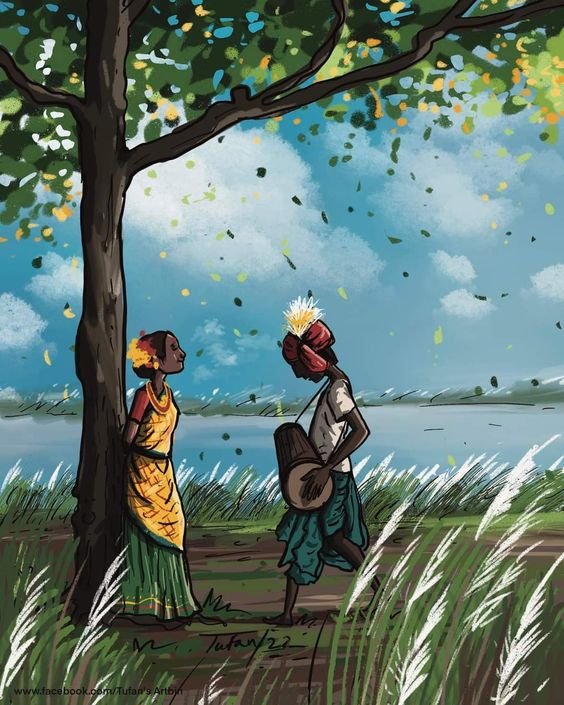
What differentiates their cultures from other ancient culture? Despite centuries of cultural interaction and influence from various groups such as Dravidians, Indo-Aryans, Mughals and Europeans, the Santals have managed to maintain their native language, Santali. This linguistic preservation is a testament to the resilience of the Santal identity and the importance they place on their cultural heritage. Along with that, their culture is deeply rooted in Mythology, including stories of ancestral figures like Pilchu Haram and Pilchu Bhudi forming a significant part of their oral tradition. These myths often serve as moral and spiritual guides for the community. Additionally, their homes are also adorned with paintings and artwork, it depicts scenes from their folklore, religious beliefs and their daily life, further reinforcing their cultural identity.
Coming to their music and dance, which is an integral component of their community and cultural expression. Their traditional dances are accompanied by the rhythmic beats of the Tamak’ and Tumdak’ drums, they usually perform during religious festivals and social gatherings. The flute holds a really special place in Santal music, it evokes nostalgia and connects the community to its heritage. These artistic forms help Santals celebrate their spirituality, history and collective identity.
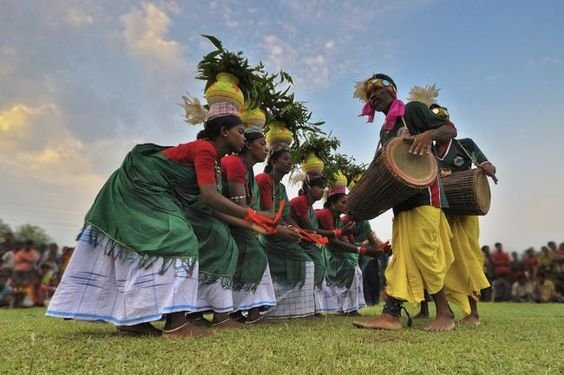
Famous for their vibrant tradition of music, dance, songs and poetry, the artistic expressions of the Santals are deeply connected with their cultural values and beliefs. It is often said that every Santal woman can dance or sing, and every man can plat a musical instrument like the drum or the flute. Their music has its own unique style, with distinct patterns of melody, rhythm and structure. Its not just about making sounds but also expressing their cultural values and beliefs. When it comes to learning music, Santals rely on a collective approach. They pass down their musical knowledge through listening, imitation and an active participation in community events. Memory and tradition play an important role in this process, as Santals learn and preserve their musical heritage as a community.
The Santal music is famous for its instruments, lets talk about these musical instruments in detail. First and foremost, The Sarpa, which is a percussion instrument made of a vertical pole that is fixed between two crossed horizontal pieces of wood. During dances, older women sing and dance in a line while younger women play the Sarpas or small brass cymbals, with two women at the ends fanning the others with their saris.

Another one of their musical equipment is the Tirio (flute), it refers to various types of flutes as well as boys’ whistles. The usual type is held to one side and has six holes. Its associated with Krishna in mythology. As mentioned earlier, Tumdak’ and Tamak’ are drums that are made of burnt clay and covered with goat and bullock hide. It is played by younger men at dances, with one hand on the narrow end for the main rhythm and the other on the broad end for a deeper note. The Tamak is an iron-kettle drum also played with sticks, used for hunting and as an accompaniment for the Tumdak’. It also has a variant called Lerda with a flat bottom. Many instruments along with these, are true testament to the Santal culture and its tradition.
The other thing, Santal people hold their pride in is their folk-dances. It serves as a distinguishing marker between the arts of the less cultured members of society and the more sophisticated expressions of the educated class. In primitive communities, the term “folk” encompasses the entire population, it reflects a collective heritage that transcends individual distinctions. Now, dance as an art form, holds a unique position among human expressions. It is simultaneously primal and refined. Even though there is a vast array of themes, forms and styles within folk art, dance remains distinct as it is characterized by its spontaneity and the active participation of everyone involved. There is an intimate relationship between folk arts and the daily functions of life which includes activities like food-gathering, hunting and farming.
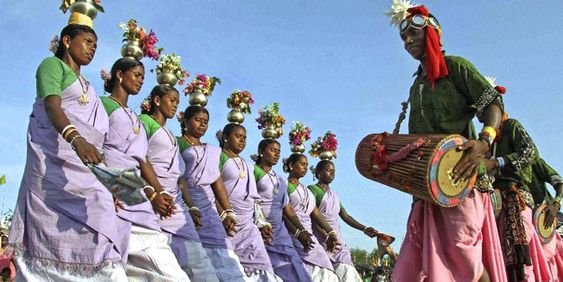
For the Santal people of Jharkhand, dancing and singing are integral components of their cultural celebration. Festive occasion brings together men, women, children and it also provides opportunities for socialization and reaffirmations of community bonds. It starts when the children are young, they are encouraged to participate in dances, this act symbolizes the continuity of traditions across generations. These dances are important as they showcase religious and social importance.
Santhal dance songs consists of various categories, it includes folk-dancing, primitive dancing and aboriginal dancing. When talking about folk-dancing in particular, it is distinguished by its organic development within the community, it is devoid of any professional influence or even formal training. It is primarily performed for the enjoyment of the participants rather than public entertainment. In contrast to the primitive and aboriginal dancing which are characterized by their spontaneous and emotional nature, this is often associated with ritualistic or ceremonial context. As civilization progresses, folk dance evolves from its primitive roots, along with that it keeps shedding the aspects of spontaneity and crudeness wile it retains its foundational essence. Despite this evolution, the significance of primitive dance as the cornerstone of folk dance, and subsequently of refined forms, remains undeniable.
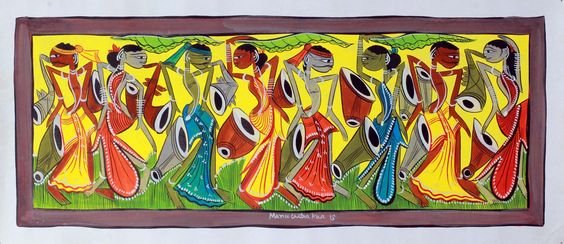
In our explorations of the Santal culture and its folk traditions, what came across was the rich tapestry of their customs, rituals and artistic expressions. It ranges from their steadfast preservation of language to their vibrant music and dance traditions. Central to their identity is their rejection of the caste system, it embodies principles of equality and community solidarity. The significance of folk-dance extends beyond just entertainment, it serves as a reflection of Santal beliefs, values and social cohesion. From the youngest member of the community to the oldest, everyone plays a role in perpetuating these traditions, ensuring their continuity across generations.
